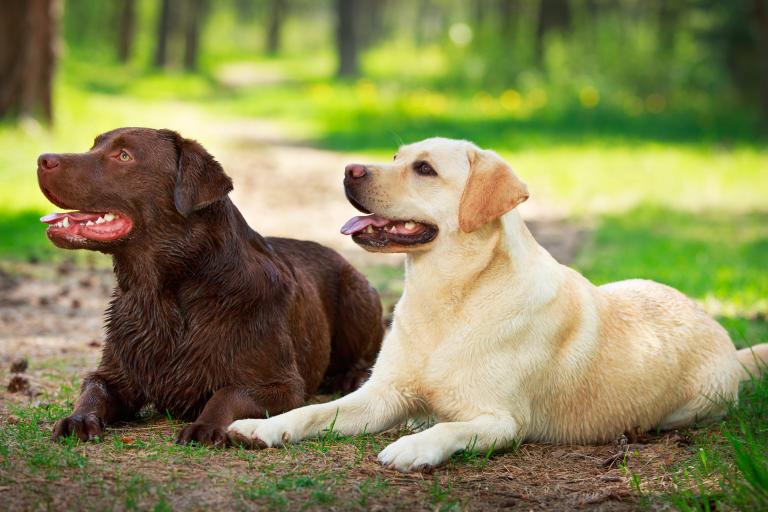Hereditary Nasal Parakeratosis (HNPK Dog)
Hereditary Nasal Parakeratosis (HNPK) is a differentiation disorder of the skin cells (keratinocytes) in the area of the dog's nose. Affected dogs show firm scabs on the upper nose leather and thus a risk of cracks and fissures on the nose.
The pre-damaged skin can be more easily infected by pathogens, which can lead to complications. The animals are otherwise healthy.
The disease occurs in the Labrador Retriever. The inheritance is autosomal recessive.
Genetic Test: available in Shop
Symptoms
- Dry nose
- Scaling on the nose
- Firm scabs on the upper nasal surface
- Risk of cracks and fissures on the nose
- This increases the risk of secondary infections
General Information
- Hereditary Nasal Parakeratosis (HNPK) is a differentiation disorder of the skin cells (keratinocytes) in the area of the dog's nose.
- Normally, skin cells become horny cells in the course of their development after losing their nucleus and are shed on the skin surface (exfoliation).
- In nasal parakeratosis, this development is disturbed and cells remain on the skin surface.
- First symptoms usually appear at the age of 6 months to one year.
- The animals are otherwise healthy.
Test Information
This test detects a missense mutation (c.972T>G) in the SUV39H2 gene.
Test in Shop
Also in the Labrador Retriever A package (DRC P1)
The test is carried out in a partner laboratory.
Genotype and Lab Report
Inheritance: autosomal recessive
→ The disease only occurs when both alleles of the gene are affected by the mutation (hnpk/hnpk). Dogs that have only one allele with the causative mutation (N/hnpk) are clinically healthy carriers.
Genotypes:
N/N = genetically normal
The dog has no variants for HNPK and thus cannot pass it on to offspring.
N/hnpk = a carrier
The dog is a clinically healthy carrier. The variation is passed on 50% to the offspring, which are also carriers.
hnpk/hnpk = affected
The variation will be passed on to 100% to the offspring.
Recommendations
- Carrier animals can be bred to normal animals (N/hnpk x N/N). Before using the offspring in breeding, it should be tested whether they are normal or carriers.
- Mating two carrier animals (N/hnpk x N/hnpk) should be avoided because there is a 25% chance that the offspring will be affected.
- Affected animals (hnpk/hnpk) should be excluded from breeding.
Literature
Jagannathan, V., Bannoehr, J., Plattet, P., Hauswirth, R., Drögemüller, C., Drögemüller, M., Wiener, D.J., Doherr, M., Owczarek-Lipska, M., Galichet, A., Welle, M.M., Tengvall, K., Bergvall, K., Lohi, H., Rüfenacht, S., Linek, M., Paradis, M., Müller, E.J., Roosje, P., Leeb, T.: A mutation in the SUV39H2 gene in Labrador Retrievers with hereditary nasal parakeratosis (HNPK) provides insights into the epigenetics of keratinocyte differentiation. PLoS Genet 9:e1003848, 2013. Pubmed reference: 24098150. DOI: 10.1371/journal.pgen.1003848.
Bannoehr, J., Balmer, P., Stoffel, M.H., Jagannathan, V., Gaschen, V., Kühni, K., Sayar, B., Drögemüller, M., Howald, D., Wiener, D.J., Leeb, T., Welle, M.M., Müller, E.J., Roosje, P.J.: Abnormal keratinocyte differentiation in the nasal planum of Labrador Retrievers with hereditary nasal parakeratosis (HNPK). PLoS One 15:e0225901, 2020. Pubmed reference: 32119674. DOI: 10.1371/journal.pone.0225901.
Further information is available at: Online Mendelian Inheritance in Animals.

